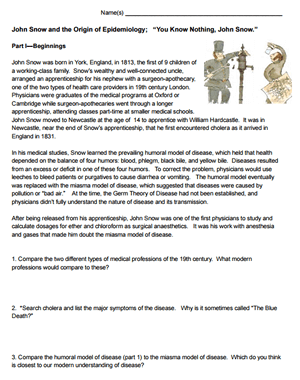
This case study explores a time before the Germ Theory when doctors were uncertain how disease was spread. Current models, such as the humoral or miasma model could not fully explain how cholera infected some households, but not others. This case story explores London, England in 1854 after an outbreak of cholera which had a mortality rate of 12.8%.
Students examine a map which shows houses where cholera had been reported and places where there were common water sources and follow the steps of John Snow, who is considered the “Father of Epidemiology.” This methodology is still used today to establish patterns of infections for emerging diseases.
In addition to epidemiology, the case study explores the history of sanitation, and how cesspits likely contributed to the spread of cholera.
Grade Level: 10-12
Time Required: 1-2 hours

